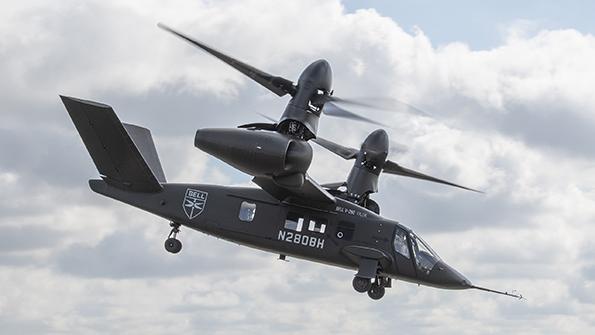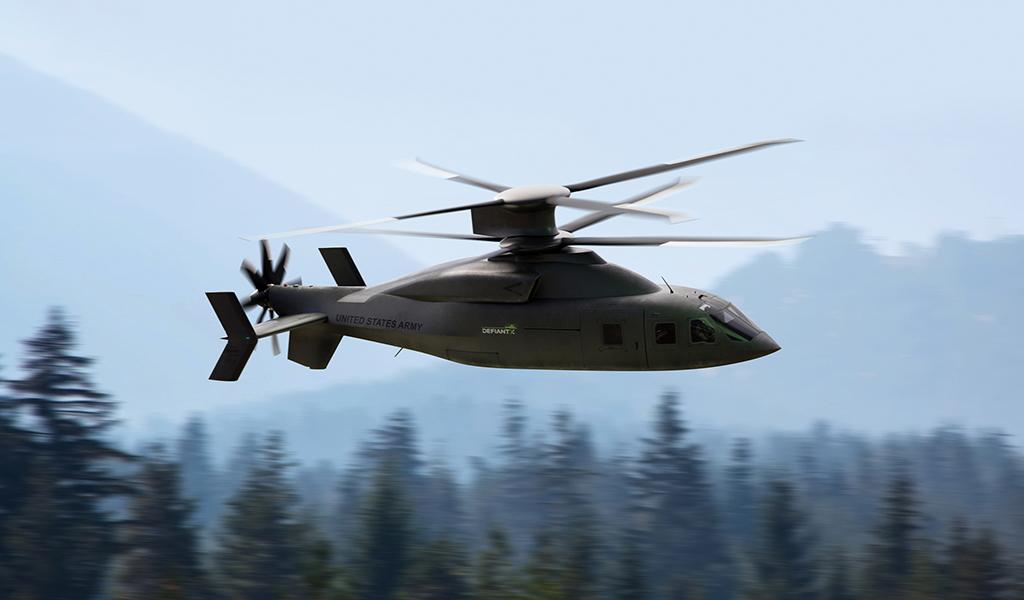
The V-280 Valor builds on decades of operational experience with tiltrotors and introduces stationary engine nacelles and sliding side doors.

The most consequential decision in more than 30 years for the U.S. military rotorcraft industry and the Army’s aviation branch is set to be made in the next several weeks.
The Bell V-280 Valor or Lockheed Martin/Boeing Defiant X are awaiting a contract award to launch development of the Future Long-Range Assault Aircraft (FLRAA), a program whose officials seek to replace the ubiquitous Sikorsky UH-60 Black Hawk and introduce the first high-speed rotorcraft into service since the Bell-Boeing V-22 Osprey family.
The Army’s choice could have profound implications for future airborne assault and medical evacuation missions. The selection also opens a new era for the U.S. rotorcraft industrial base.
The Marine Corps’ V-22 fleet has demonstrated the operational value of long-range, high-speed aircraft that can operate independently of runways. Now the Army wants to leverage similar technology to support a vision of distributed, multidomain operations across the western half of the Pacific Ocean.
Meanwhile, the U.S. rotorcraft industry is eager to start working on a new aircraft design for the first time in decades. The Army has improved the UH-60 Black Hawk steadily since it entered service in 1979, but has not attempted to replace the medium-weight, twin-engine utility helicopter until now. The Sikorsky-Boeing RAH-66 Comanche was the last new rotorcraft design that entered development for the U.S. military, in 1991, but the Army canceled the program amid cost overruns in 2004.
The service began preparing for the FLRAA contract award in 2014, when the V-280 and SB-1 Defiant demonstrators were chosen to participate in the Joint Multi-Role Technology Demonstration (JMR-TD). The V-280 made a first flight in December 2017, and the Defiant followed about 16 months later, allowing both industry teams to build and fly their rotorcraft configurations before entering an engineering and manufacturing development phase.
The V-280 improves on the original tiltrotor concept in several ways, but especially by leaving the engines stationary as the rotors and driveshafts rotate between horizontal and vertical modes. Bell also used a straight wing on the Valor instead of the V-22’s forward-swept design, which eliminates the need for the Osprey’s midwing gearbox. The passengers also can enter and exit the cabin using Black Hawk-style side doors for assault missions, rather than the V-22’s aft ramp.
By contrast, the Defiant X offers a new high-speed configuration. Sikorsky introduced the coaxial, rigid-rotor and pusher-propeller configuration with the company-funded X2 demonstrator in 2008. The same approach also is the basis for the Raider X proposal for the Army’s Future Attack Reconnaissance Aircraft (FARA), which Sikorsky has demonstrated with the S-97 Raider since 2015.
Both designs are necessary for the replacement of at least a portion of the UH-60 fleet with a new aircraft that offers the speed and range of the V-22. By flying at least 100 kt. faster than a Black Hawk, the FLRAA could exploit gaps in air defenses opened by a future FARA and the Army’s expanding portfolio of Long-Range Precision Fires batteries. The additional range is needed to support operational teams scattered across islands in the Pacific.

